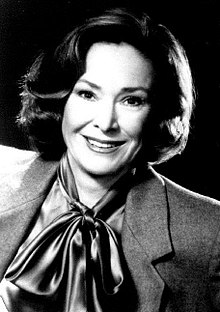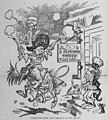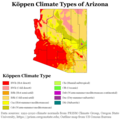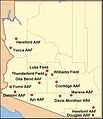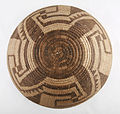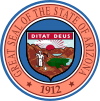| Showcase | Content |
| Showcase | Content |
Welcome to the Arizona portal!
Arizona ( /ˌærɪˈzoʊnə/ ⓘ ARR-ih-ZOH-nə; Navajo: Hoozdo Hahoodzo [hoː˥z̥to˩ ha˩hoː˩tso˩]; O'odham: Alĭ ṣonak [ˈaɭi̥ ˈʂɔnak]) is a landlocked state in the Southwestern region of the United States. Arizona is part of the Four Corners region with Utah to the north, Colorado to the northeast, and New Mexico to the east; its other neighboring states are Nevada to the northwest, California to the west and the Mexican states of Sonora and Baja California to the south and southwest. It is the 6th-largest and the 14th-most-populous of the 50 states. Its capital and largest city is Phoenix. Arizona is the 48th state and last of the contiguous states to be admitted to the Union, achieving statehood on February 14, 1912. Historically part of the territory of Alta California and Nuevo México in New Spain, it became part of independent Mexico in 1821. After being defeated in the Mexican–American War, Mexico ceded much of this territory to the United States in 1848, where the area became part of the territory of New Mexico. The southernmost portion of the state was acquired in 1853 through the Gadsden Purchase. Southern Arizona is known for its desert climate, with very hot summers and mild winters. Northern Arizona features forests of pine, Douglas fir, and spruce trees; the Colorado Plateau; mountain ranges (such as the San Francisco Mountains); as well as large, deep canyons, with much more moderate summer temperatures and significant winter snowfalls. There are ski resorts in the areas of Flagstaff, Sunrise, and Tucson. In addition to the internationally known Grand Canyon National Park, which is one of the world's seven natural wonders, there are several national forests, national parks, and national monuments. Arizona's population and economy have grown dramatically since the 1950s because of inward migration, and the state is now a major hub of the Sun Belt. Cities such as Phoenix and Tucson have developed large, sprawling suburban areas. Many large companies, such as PetSmart and Circle K, have headquarters in the state, and Arizona is home to major universities, including the University of Arizona and Arizona State University. The state is known for a history of conservative politicians such as Barry Goldwater and John McCain, though it has become a swing state since the 1990s. ( Full article...) Selected article - The history of Arizona encompasses the Paleo-Indian, Archaic, Post-Archaic, Spanish, Mexican, and American periods. About 10,000 to 12,000 years ago, Paleo-Indians settled in what is now Arizona. A few thousand years ago, the Ancestral Puebloan, the Hohokam, the Mogollon and the Sinagua cultures inhabited the state. However, all of these civilizations mysteriously disappeared from the region in the 15th and 16th centuries. Today, countless ancient ruins can be found in Arizona. Arizona was part of the state of Sonora, Mexico from 1822, but the settled population was small. In 1848, under the terms of the Mexican Cession the United States took possession of Arizona above the Gila River after the Mexican War, and became part of the Territory of New Mexico. By means of the Gadsden Purchase, the United States secured the northern part of the state of Sonora, which is now Arizona south of the Gila River in 1854. In 1863, Arizona was split off from the Territory of New Mexico to form the Arizona Territory. The remoteness of the region was eased by the arrival of railroads in 1880. Arizona became a state in 1912 but was primarily rural with an economy based on cattle, cotton, citrus, and copper. Dramatic growth came after 1945, as retirees and young families who appreciated the warm weather and low costs emigrated from the Northeast and Midwest. ( Full article...)
Did you know (auto-generated) -
Selected picture -
Glen Canyon, in southeastern and south central Utah and northwestern Arizona within the Vermilion Cliffs area, was carved by two rivers, the Colorado River and the San Juan River.A reservoir, Lake Powell, was created by the Glen Canyon Dam. Lake Powell emerged from a struggle over damming Dinosaur National Monument. More did you know -
WikiProjects
Selected biography -Joan Ganz Cooney (born Joan Ganz; November 30, 1929) is an American television writer and producer. She is one of the founders of Sesame Workshop (formerly Children's Television Workshop or CTW), the organization famous for the creation of the children's television show Sesame Street, which was also co-created by her. Cooney grew up in Phoenix and earned a Bachelor of Arts in education from the University of Arizona in 1951. After working for the State Department in Washington, D.C., and as a journalist in Phoenix, she worked as a publicist for television and production companies in New York City. In 1961, she became interested in working for educational television, and became a documentary producer for New York's first educational TV station WNET (Channel 13). Many of the programs she produced won local Emmys. In 1966, Cooney hosted what she called "a little dinner party" at her apartment near Gramercy Park. In attendance was her then-husband Tim Cooney, her boss Lewis Freedman, and Lloyd Morrisett, an executive at the Carnegie Corporation, in which the potential of television to teach young children was discussed. Cooney was chosen to oversee and direct the creation of what eventually became the children's television program Sesame Street, which premiered in 1969, and the CTW, the organization that oversaw its production. Cooney was named CTW's first executive director. As one of the first female executives in American television, her appointment was called "one of the most important television developments of the decade". ( Full article...)
General images -The following are images from various Arizona-related articles on Wikipedia.
News
Wikinews Arizona portal
CategoriesRelated portalsTopicsState facts
State symbols:
Recognized content
Featured articles
Featured lists
Good articles
Featured pictures
Things you can do
Associated WikimediaThe following Wikimedia Foundation sister projects provide more on this subject:
Discover Wikipedia using
portals | |||||||||||||||||||||||







